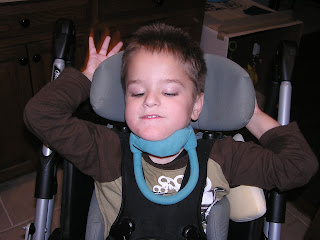Scientists are learning so much about stem cells and how they are healing victims of TBI- traumatic brain injury.
How Stem Cell Implants Help Heal Traumatic Brain Injury
ScienceDaily (Jan. 12, 2012) --- For years, researchers seeking new
therapies for traumatic brain injury have been tantalized by the results
of animal experiments with stem cells. In numerous studies, stem cell
implantation has substantially improved brain function in experimental
animals with brain trauma. But just how these improvements occur has
remained a mystery.
Now, an important part of this puzzle has been pieced together by
researchers at the University of Texas Medical Branch at Galveston. In
experiments with both laboratory rats and an apparatus that enabled them
to simulate the impact of trauma on human neurons, they identified key
molecular mechanisms by which implanted human neural stem cells -- stem
cells that are in the process of developing into neurons but have not
yet taken their final form -- aid recovery from traumatic axonal injury.
A significant component of traumatic brain injury, traumatic axonal
injury involves damage to axons and dendrites, the filaments that extend
out from the bodies of the neurons. The damage continues after the
initial trauma, since the axons and dendrites respond to injury by
withdrawing back to the bodies of the neurons.
"Axons and dendrites are the basis of neuron-to-neuron communication,
and when they are lost, neuron function is lost," said UTMB professor
Ping Wu, lead author of a paper on the research appearing in the
/Journal of Neurotrauma/. "In this study, we found that our stem cell
transplantation both prevents further axonal injury and promotes axonal
regrowth, through a number of previously unknown molecular mechanisms."
The UTMB researchers began their investigation with a clue from their
previous work: they had determined that their neural stem cells secreted
a substance called glial derived neurotrophic factor, which seemed to
help injured rat brains recover from injury. As a first step toward
identifying the processes by which GDNF and neural stem cell
transplantation produced their beneficial effects, Wu enlisted UTMB
professors Larry Denner, Douglas Dewitt and Dr. Donald Prough to use
proteomic techniques to compare injured rat brains with injured rat
brains into which neural stem cells had been transplanted.
"We identified about 400 proteins that respond differently after injury
and after grafting with neural stem cells," Wu said. "When we grouped
them using a state-of-the-art Internet database, we found that a group
of cytoskeleton proteins was being changed, and in particular one called
alpha-smooth muscle actin, which had never been reported in the neurons
before."
Because so many of the proteins that changed were related to axonal
structure and function, the UTMB scientists then focused on traumatic
axonal injury. Initially working with rats, they confirmed that axons
and dendrites suffered damage from trauma; implanted neural stem cells
reduced this harm, as well as lowering levels of alpha-smooth muscle
actin inside neurons that were raised after trauma.
To probe further into the molecular details of GDNF's role in reducing
traumatic axonal injury, the researchers used a system in which human
neurons were placed on a flexible membrane that was then suddenly
distended with a precisely calibrated puff of gas. Their goal was to
simulate the sudden compression and stretching forces exerted on brain
cells by a blow to the head.
Initial results from this "rapid stretch injury model" matched those
seen in rat experiments, with GDNF protecting axons and dendrites from
additional damage in the period after trauma and significantly reducing
alpha-smooth muscle actin levels boosted by the simulated injury. In
addition, they found evidence linking alpha-smooth muscle actin with
RhoA, a small protein that blocks axonal growth after injury. Finally,
again taking a cue from their proteomic study, they turned their
attention to one component of a protein known as calcineurin, finding
that it interacted with GDNF to protect axons and dendrites in the RSI
model.
"We're quite excited about these discoveries, because they're highly
novel -- we now know much more about how GDNF protects axons and
dendrites from further injury and promotes their re-growth after
trauma," Wu said. "This kind of detailed study is essential to
developing safe and effective therapies for traumatic brain injury."
Other authors of the Journal of Neurotrauma paper include graduate
students Enyin Wang, Junling Gao and Tiffany Dunn; assistant research
lab director Margaret Parsley; Qin Yang of Huazhong University of
Science and Technology in Wuhan, China, Lin Zhang of Sichuan University
in Chengdu, China; and professors Douglas DeWitt, Larry Denner and
Donald Prough. Support for this research was provided by the U.S. Army,
the Coalition for Brain Injury Research, the Moody Center for Traumatic
Brain and Spinal Cord Injury Research, Mission Connect, the TIRR
Foundation, the China Scholarship Council, the John S. Dunn Research
Foundation and the Cullen Foundation.







